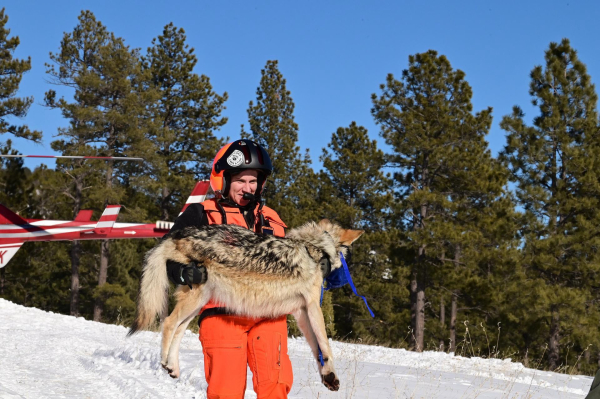USSAF Files Comments on Proposal to Delist Gray Wolves
On Tuesday, December 17th, the U.S. Sportsmen’s Alliance Foundation (USSAF) filed comments with the U.S. Fish and Wildlife Service (Service) over a proposal to remove Gray Wolves from protection under the Endangered Species Act.
Wolves continue to remain at the forefront of the issues facing the sportsmen’s community today. While the Western Great Lakes and Rocky Mountain populations of wolves have already been removed from ESA protection (“delisted”), this latest proposed rule would delist the remaining wolf populations across the country (with narrow exceptions for Mexican wolves in the Southwest and Red wolves in the Southeast). In addition, USSAF and our partners are currently engaged in lawsuits in Wisconsin over their wolf hunting season and in a lawsuit in federal district court in which the Humane Society of the United States is asking a judge to again overturn the delisting of wolves in the Western Great Lakes.
Of particular concern with the latest proposal is the potential for the Service to recognize two separate wolf species. While sportsmen will generally welcome delisting of a species that is as numerous as wolves (there are over 3,000 in Minnesota alone and thousands elsewhere), the Service’s proposal to “split” visually identical gray wolves into two separate species is concerning.
Traditionally, there has been one recognized gray wolf species (known as “canis lupus”). Now as part of an effort to create confusion and undermine the delisting prospects, animal rights and anti-hunting groups are pushing to split the gray wolves by recognition of a second major wolf species (to be called “canis lycaon”). They argue that the two wolf species co-exist in the Western Great Lakes region despite the best scientific evidence showing a singular wolf population. Just two years ago, in December 2011, after reviewing the testimony of an expert genetics witness hired by USSA, the Service had found there was only one wolf species in the Western Great Lakes. But now the Service is reconsidering that issue.
“This issue has already been addressed by the scientific community and by the Service just two years ago in their 2011 final delisting rule for the Western Great Lakes population,” said Evan Heusinkveld, USSA vice president of government affairs. “If the anti’s are successful in subverting the science here, the implications are extremely dangerous for sportsmen and women.”
Splitting wolves into two species on the basis of alleged minor genetic differences would, if adopted, provide ammunition to animal rights and anti-hunting groups to undermine wolf delisting. Since it is likely impossible to tell these supposedly separate wolves apart visually, it would be hard to count how many wolves are in each category in order to prove neither are endangered. If the two wolf theory is adopted, anti-hunting organizations would be positioned to argue that one or the other species remains endangered, and that both must be protected because they are so similar in appearance.
While the public comment period closed on December 17th, official action by the Service is not expected until mid-June 2014.
– See more at: http://www.ussportsmen.org/hunting/ussaf-files-comments-on-proposal-to-delist-gray-wolves/#sthash.kOm9ZIVS.dpuf






